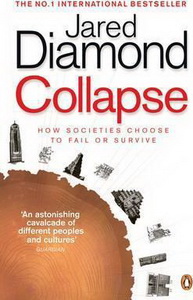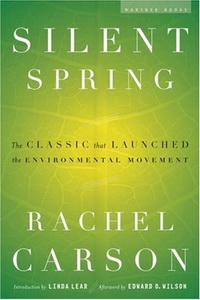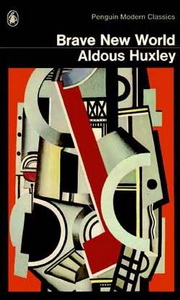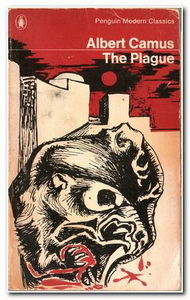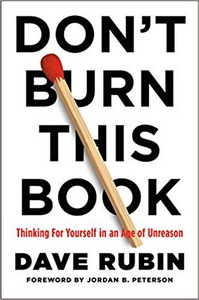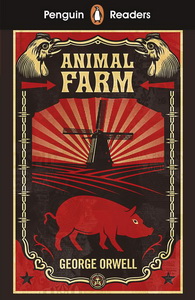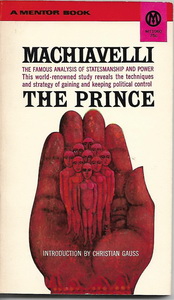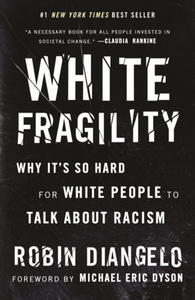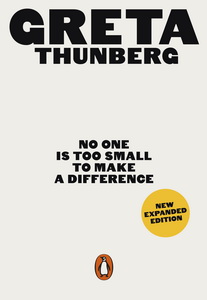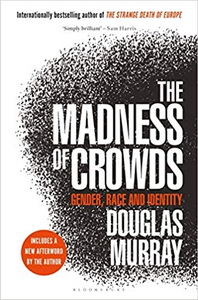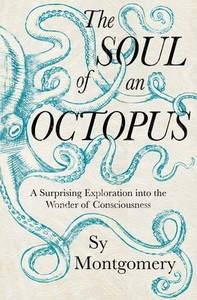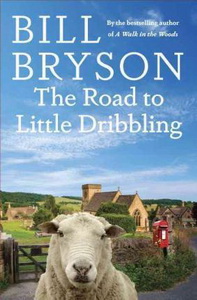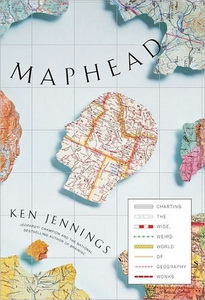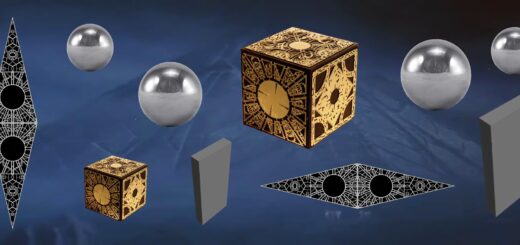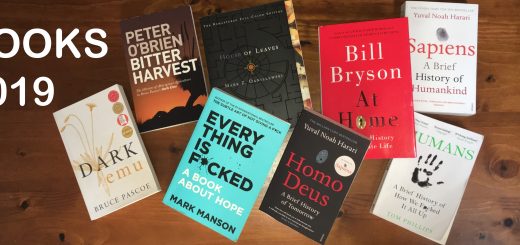Books I Managed to Read During 2020
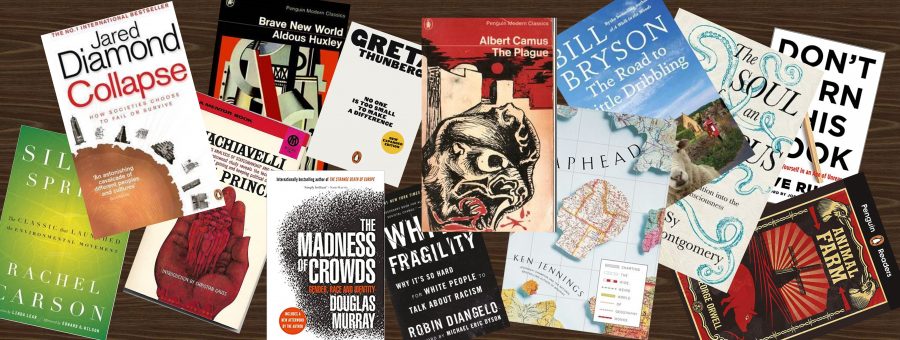
Shôn Ellerton, January 13, 2021
Here’s a quick rundown of the list of books I read during 2020.
The year of 2020 proved to be quite a rollercoaster in terms of current affairs which made it a little difficult at times to pull away from reading or listening about them; however, I still managed to get in over a dozen books over the year.
My choice of books ranged from the old to the new mainly comprising of non-fiction covering a wide variety of topics from environmental issues to critical race theory and from travel to octopuses. From books spanning a few dozen pages like Animal Farm to complex tomes like Jared Diamond’s Collapse. A couple of classic fictional books were thrown in for measure as well.
Collapse (2005) by Jared Diamond
Collapse is possibly one of the most satisfying and informative books I have ever read on how complete societies collapse. Citing historical examples in detail including the civilisations of Easter Island, the Pitcairn Islands, the Anasazi, the Greenland Norse, and the Mayans, Diamond uses his 5-point framework to assess how these societies had collapsed, or in the case of the Pitcairn Islanders, collapsing.
Diamond later covers more recent examples including the farms of Montana, the forests of Japan, the vast differences between Haiti and the Dominican Republic sharing the same island, the genocides of Rwanda, the environmental disasters of China and irresponsible mining and export of raw resources from Australia.
Diamond does not hold back with some of his views; however, he does not resort to simply penning down opinions without any justifications backed by facts or through rigorous debate. Perhaps one of his most scathing sections is when he described the intentional stripping of natural resources in Australia all in the name for a quick short-term profit without thinking of the long-term consequences. The best example he cited was the export of raw timber at $7 per ton to Japan; and all this while Japan retains over 75% of its forests as a smart strategy against deforestation. And to add more fuel to his scathing, Diamond is quick to mention that Japan then sells that same wood as paper for $1000 per ton!
There is so much information in this book that I could not possibly do this any justice in such a short review to give a reasonable account of what this book sets out to achieve. It is not a fast read by any means taking nearly a month for me to complete but it is a must-have for anyone interested in these topics.
Silent Spring (1962) by Rachel Carson
This book was lying in my bookshelf for years and years unread since my childhood slowly deteriorating to the point that, after recently reading the book, the pages simply fell out to a jumbled heap on the floor.
I decided to read the book on account of it being considered the grandmother of our modern environmentalist ‘scare’ books warning us that if we do not act in better preserving our planet, we won’t have much of a planet left to enjoy being in. The book is also a piece of history as it was written decades ago during 1962, a time of seemingly unrestricted use of pesticides and dumping of toxins into our soils and oceans. It is a stark reminder that, many decades later, and with vastly more people, we are still gross contributors in poisoning the planet. How much have we learnt since then?
The book makes out for generally dry reading and it does tend to repeat the mantra over and over that we need to lessen the indiscriminate use of poisons in order to check the growth of unwanted flora and fauna; however, there are some quite interesting areas in the book in my opinion. For example, the first half of the book explains in quite some detail how pesticides work like DDT and many other poisons I never heard of like Parathion, which, apparently is very toxic indeed.
For me, the most memorable point of the book is towards the beginning where she explains the complex process how nerve gases attack the nervous system. She does this most informatively making it quite easy to understand. However, Carson does tend to contradict herself in several parts of the book in relation to her stance on introducing wildlife, whether flora or fauna, to control an invasive species. Moreover, from the middle of the book onwards, she becomes increasingly repetitive and alarmist citing statistics which, no doubt, has raised the eyebrows of many sceptics during her time.
This is not a book I would rush to read again; however, from a historical aspect on the repertoire of environmental science books, it is well worth a read.
One quote which I can remember vividly from the book is
‘Man can hardly even recognise the devils of his own creation’
Brave New World (1932) by Aldous Huxley
Anyone who enjoys reading books about dystopia would have read, or at least should have read, Brave New World. For me, this is a re-read as I first read this as a teenager in school. Apart from some of the more detailed elements of the book and the names of the characters, much of what I remember reading was still intact while re-reading it.
For me, this is one of three books that form a trio of books portraying a possible future dystopia controlled by totalitarian societies; the other two being Eugene Zamyatin’s We and, of course, George Orwell’s Nineteen Eighty-Four. What makes Brave New World different in contrast to Orwell’s vision of a dystopian totalitarian future set in London, is that those who live here are all content and happy. Instead of forced control through fear and punishment, society is stratified into five levels or castes; the alphas being at the top of the pile as the elite and the privileged, down to the betas, the equivalent of our white-collar managers, the gammas and deltas, the main workforce down to the pariah caste of epsilon, comprising of retarded imps who operate lifts and mindless repetitive tasks.
Society is controlled through science in which all are born as test-tube babies. Natural birth and family love are considered savage and barbaric. Rampant and loveless sex is encouraged from early childhood to dispel the loving nature of being in a nuclear family. As an aside, earlier last year, shivers went down my spine when I read a passage in the Black Lives Matter website that the movement purports to ‘disrupt the nuclear family’. The passage was later removed by the movement.
In this dystopian world, the test tube babies are given varying amounts of alcohol to deliberately check the progress of growth and intelligence depending on where they will sit in the caste system. They are conditioned from children to young adults to ‘be happy’ regardless of which level of the caste system they are to be positioned into by means of aversion therapy, subconscious learnings through sleep, and brute force repetition and immersion.
There is no religion except that of worshipping Ford with a T-shaped crucifix to represent the Model T and reward is gained by being offered soma, an addictive drug which induces the feeling of escapism and pure pleasure.
It all goes interesting when a Native American Indian from a reservation in New Mexico shielded away from the new utopia is flown into London as a sort of barbaric ‘museum piece’.
The content of the book is very important and incredibly pertinent to the society we are living in today. Much more so than Orwell’s vision. Although, in my opinion, the style of writing is a shade over average; this book is an absolute must-read for all who value their liberty, individualism and compassion for others.
One of the memorial quotes in this book is,
‘Great is truth, but still greater, from a practical point of view, is silence about truth’
The Plague (1947) by Albert Camus
I read Albert Camus’s The Stranger in my childhood, but I never got around to reading The Plague until 2020. In fact, sales of the book had done exceedingly well due to the coronavirus pandemic and all the ensuing lockdowns that followed. Knowing that Camus is commonly claimed as being an existentialist—whether he really was is debatable—I had half-expected that this book would be obscure and difficult to read. However, apart from a few lengthy philosophical passages which one could quickly skirmish over, the book was easy to read and flowed quite nicely.
It is a fictional story of a bubonic plague that ravished the city of Oran, Algeria on the northern coast of Africa, and, according to historians, Camus wrote it as a parody of the then existing regime of Vichy France during the 1940s. In the story, Oran is quickly sealed and quarantined where no one can go in or out when it is discovered that a flurry of rats died in thousands from an unknown plague. Soon thereafter, people became sick and died in big numbers in which the movement of body bags through the city’s streets became commonplace. The story is centred around a doctor by the name of Rieux and other characters which he gets to know in the confined city of Oran during the epidemic.
The book is interesting because it immerses the reader in being in an environment which is isolated and, in a society, which is slowly breaking down due to the nasty disease. Many aspects of life under the coronavirus for some in the world under stringent lockdowns are so cannily similar to that portrayed in the book. For example, there are lockdowns, people forced into isolation, food shortages, panic buying and the best of them all, those who take advantage of the epidemic, like the loutish Cottard, a character in the book that nobody liked before and after the plague but one who everyone turned to as the black market profiteer during the plague. The most haunting aspect of the book is the slow transformation to apathy and acceptance of the plague, much like today’s stringent lockdowns across the world in which the majority of the population have succumbed to the Stockholm Syndrome.
The book is very well-written and, considering the events of today’s pandemic, an essential read.
Don’t Burn This Book (2020) by Dave Rubin
Dave Rubin, for those who don’t know him, is a member of the much-maligned Intellectual Dark Web (IDW) and a writer and vlogger on social, political and current affairs. Proclaiming to be a classical liberalist, he is fighting back against the herd-like radical progressives who he claims are tearing the soul of the nation apart. Rubin, who himself is gay, sided with the Democrats on values of liberalism and tolerance until a few years ago when, according to Rubin, the tables were turned, where now the conservative Republicans are more closely aligned to liberty, individualism and free thought.
Being a member of IDW; free speech, logic, merit, reason and individual liberty are pillars which Rubin elaborates on and upholds in his new book, Don’t Burn This Book. It runs through many social agendas which have endangered the very values which he claims to uphold during the last few years. He writes about woke warriors, gender rights, censorship, fake news and how to fight back never surrender to the ‘mob’, a term that author, Douglas Murray, frequently cites.
It’s not a bad book by any means but it didn’t leave much of an impression to me, probably on account of much of the material covered in the book was material that I already became familiar with during the last few years of current affairs. It’s easy enough to read, much like reading a Jeremy Clarkson kind of book, the kind of book one could pick up at the airport and read cover to cover during a long-haul flight.
Animal Farm (1945) by George Orwell
Oddly enough, this is one book that escaped my book repertoire until 2020. Being a short, easy book to read suitable for children and adults alike, it is an incredibly potent allegory of how communism works through a farmyard of animals who overturn their master’s ruling by revolting. Every animal, from pigs, sheep and cows to crows, cats and dogs are portrayed as a member of a caste or stratum of society. For example, pigs represent the inner party of the communist elite, the horses are the loyal workers, the crow is the spy, and the dogs are the revolutionary guards of the ruling pigs. The sheep, of course, are the masses who mindlessly follow, bleat and repeat everything the party asks them of; in other words, the narrative.
This very clever little book practically mirrors Stalin’s Soviet Union and Mao’s China. The pigs, Snowball and Napoleon, plan for the revolution against the farmer spreading propaganda to the other animals that life will be much better without humans ruling over them. Snowball and Napoleon fall out and Napoleon spins a story that Snowball is, somehow, complicit in the death of one of the other animals because of his ‘treachery’ during a skirmish with the local farmers that went all wrong. Quotas and yields drop off to the point where food scarcities are acute, but the pigs spin the narrative that all is good and that continuing to work hard for the sake of the ‘party’ will reap benefits in the future. Naturally, the pigs are enjoying the excesses of their elitist lifestyles much like the inner parties of communist China and Russia. The book is a damning indict of the failures of communism and, much like Orwell’s seminal work, Nineteen Eighty-Four, should be read by all school students as a reminder that democracy should not be taken for granted.
The Prince (1532) by Niccolo Machiavelli
Let me first say this. This is not an easy read despite it being a relatively short book. Having come across the word, Machiavellian, many times, I decided to take the plunge and read The Prince. Without a reasonable knowledge of early European history prior to the 1500s, much of the book is a bit of a struggle but after extracting the proverbs and snippets of wisdom pertaining to how to win a war, it is worth a read if you want to get a little context behind the scenes. Interestingly, the proverbs and quotes cited by Machiavelli are not limited to the excesses of war, but also to consumerism and competition in a capitalist society. Even in general philosophy, his quotes are relevant. Successful stock market traders will, no doubt, be familiar with some of his quotes knowing how to apply it to the markets.
Not unlike Aesop with his magnificent selection of fables, each with a moral, or Sun Tzu’s Art of War, with his powerful arsenal of proverbs, Machiavelli delivers some great quotes.
Examples include,
‘Everyone sees what you appear to be, few experience what you really are.”
“The first method for estimating the intelligence of a ruler is to look at the men he has around him.”
“Of mankind we may say in general they are fickle, hypocritical, and greedy of gain”
White Fragility (2018) by Robin di Angelo
The year of 2020 is the year that the notion of critical race theory and anti-racism were made mainstream, although, I dare say, that the vast majority of us are not familiar with the terms in the technical sense. Most are familiar with the ‘first-world’ problem of white privilege and systemic racism, both concepts which are truly alien to most in the developing world. The postmodernist framework of critical race theory stemmed from critical legal studies during the late 80s and espouses the idea of examining legal frameworks through the lens of race. As for anti-racism, it is not the same as being not racist. Anti-racism requires that one is explicitly aware of someone else’s race and knowing how to act or behave accordingly when interacting with. In other words, if I was to talk to my friend about computers, who happened to be Indian in appearance, if my behaviour was deemed as being not racist, I would interact with him as if he was any person. However, as an anti-racist, I would first need to identify my race and position in society and his, and, depending on the frameworks of the racial lenses and underlying principles of…. and so on.
Needless to say, the principles of critical race theory in my opinion are deeply flawed and terribly divisive. Most who support critical race theory have probably never travelled to the developing world, certainly not Africa, and have not had extensive friendships or dealing from those coming from other countries. Enter Robin Di Angelo who wrote White Fragility, a book so utterly absurd and preposterous that I wrote a complete article about it. However, for those who are curious to know a little more about anti-racism and critical race theory, this is a good book as any, although it is a little on the repetitive and lengthy side. Another book related to anti-racism is Kendi’s How to be an Anti-Racist, which I have not read as of time of writing.
The link to my full article critiquing White Fragility is below.
https://medium.com/ironkeel/my-critique-on-white-fragility-56ef332b8942
No One is Too Small to Make a Difference (2020) by Greta Thunberg
This is a tiny book, literally as well as in the number of words, by environmentalist activist Greta Thunberg. Love her or hate her, she has made a valiant attempt in getting the younger set on board in the problems of growing pollution and effects of climate change in today’s world. The book is really a collection of her letters most of which speaks the obvious. Saying that, our society can sometimes do with a little reminding of the obvious!
The Madness of Crowds (2019) by Douglas Murray
Along with the aforementioned Collapse by Jared Diamond, The Madness of Crowds by Douglas Murray is one of the two most memorable books I’ve read during 2020. Douglas Murray, a well-educated, well-spoken, a gay liberalist journalist who wrote The Strange Death of Europe became extremely vocal against mob mentality, wokeness, political correctness, cancel culture, critical race theory, forced pronoun use, trans-rights (the new kind where gender is a social construct rather than a biological one) and censorship. His Madness of Crowds is a veritable tour-de-force of a book running through, in detail, each topic giving great examples taken from current affairs over the last decade.
As with Diamond’s book Collapse, who gives a seminal account of the collapse of societies, Murray’s book is the seminal one discussing the issues of political correctness and the ‘woke’. He centres much of his work on the inadequacies and lack of courage of the silent majority to push back against the rising tyranny of forced narratives from a small and vocal extremist minority of which, if not followed, becomes an offence punishable by the unthinking herd-like mob. There is an enormous amount of material covered in the book, and what has surprised Murray according to his interviews with many other journalists, is that what he predicted came far faster than he ever envisaged, prompting him to add a new section during 2020. This is a book well-worth reading and, for those who support some of the topics he attacks in his book, will most likely be offended, another topic that Murray discusses in glorious detail. It is a quite a lengthy and packed book, but it reads very clearly.
The Soul of an Octopus (2015) by Sy Montgomery
And now for something completely different! I decided to read a book which my sister recently enjoyed and recommended. A book about octopuses. Yes, that’s right. Not octopi, but octopuses. Sy Montgomery, known for many other animal-related books, wrote a complete book about her interaction with octopuses at her local aquarium and on her scuba diving travels. After reading this, one would not be at all surprised if octopus was stricken off your seafood diet. I knew since my childhood that octopuses are relatively intelligent animals, but I did not know that they could be as amiable, emotional, belligerent or even conscientious as portrayed in the book.
It was an ok read, but I began to tire a bit during some of the chapters in the book, especially in those areas the author recounted in detail her personal experiences with scuba diving and her circle of friends. Moreover, I was a little surprised that no material in the book discussed the differences in intelligence between the octopus and other members of the cephalopods like squid and cuttlefish.
If you like marine life, and of course, octopuses, this is a good read.
The Road to Little Dribbling (2016) by Bill Bryson
How I love Bill Bryson, the renowned writer of Made in America and A Short History of Nearly Everything and many other great writings. His way of writing is so incredibly easy to follow; it is funny, humorous and, at times, a little scathing. This book is his follow-up to Notes from a Small Island in which he goes back to England after a spell of twenty years or so. Bryson starts off in this book by being a little on the grumpy side, not unlike the books written by Jeremy Clarkson. For example, his dislike of indifferent English service, uncomfortable bus travel and couples glued to their phones while having a meal at a restaurant is clearly made apparent. However, he has much to acclaim as well as to criticise during his little round-robin trip around the country. For example, he gives much praise to London being one of the world’s greenest cities and speaks highly of those cities that have made an effort to keep them clean and unspoiled. What makes Bryson fun are those occasions he randomly brings up a subject like British road-naming and runs off in detail how they are numbered, much like he did when he elaborated on the US road system in his much larger and denser book, Made in America. Bryson’s fascination with maps prompted him to recount a book he read called Maphead, and me, also being fascinated with maps, made this book the next on the list.
A very easy and fun book to read, although one should really read Notes from a Small Island first.
Maphead (2011) by Ken Jennings
This is probably the most obscure book I’ve read this year and, unless you’re into maps and managed to learn of this book, would probably have never heard of it. I found out about the book from reading Bryson’s book, The Road to Little Dribbling.
This book, and it is quite a reasonably large-sized book as well, managed to maintain my interest on the sole subject of, well, yes, you guessed it. Maps!
Jennings highlights the importance of the art of map reading and how the practice of doing so is becoming increasingly diminished with the widespread and indiscriminate use of GPS and online navigation tools. For example, the context of how maps fit into our geography is increasingly becoming lost as we rely on following a dot on a screen without really caring which is east or west, or which is north and south.
The book is also funny in parts especially when the author recounts South Carolina’s Teen USA, Caite Upton, back in 2007 when her response to the question of
‘Recent polls have shown a fifth of Americans can’t locate US on a world map. Why do you think this is?’
was
‘I personally believe that U.S. Americans are unable to do so because, uh, some people out there in our nation don’t have maps and, uh, I believe that our, uh, education like such as in South Africa and, uh, the Iraq, everywhere like such as, and, I believe that they should, our education over here in the U.S. should help the U.S., uh, or, uh, should help South Africa and should help the Iraq and the Asian countries, so we will be able to build up our future, for our children’ – Caite Upton
Also funny in the book is the author’s analogy of the woman’s scorn of a man who leaves the toilet lid up to the man who leaves North always facing up on a GPS device. This is almost too true for words. I, personally, feel disoriented if North is not facing up; however, my wife gets discombobulated when the direction she is travelling is not pointing up. Continuing with gender differences, his observation that men are better at looking for places, but women are better at finding things is so generally true. For example, the adage that women can’t find anything on a map, yet, when a man tries to find his keys—which are in full visibility on the table—he fails in doing so. I’ve been there!
There are many more amusing parts of the book like the section about crazy place names like Truth or Consequences and PokerShare.com. Or about the crazed obsession with geocaching, the hobby of looking for little treasures people leave in plastic containers hidden in crevices of trees and rocks or some other object with only a clue and a coordinate to run by with. Or even more bizarre, the hobby of degree confluencing in which the idea is to stand on as many spots on the world where whole degrees of longitude and latitude converge. Most are in the ocean of course!
There is cornucopia of information about anything to do with maps. Fictional maps in literature. The notion of geoslavery in movies like Minority Report. Differences in projections of the world, for example, the difference between a Robinson, Peters or a Mercator projection. And so much more.
A genuinely fascinating read. If you like maps!
